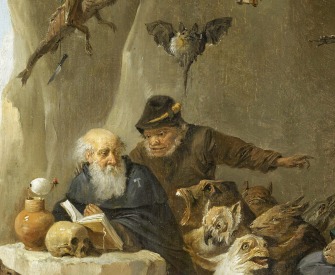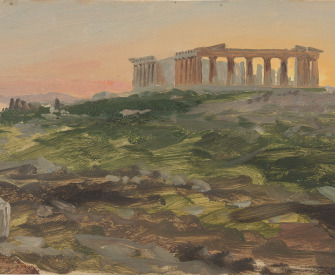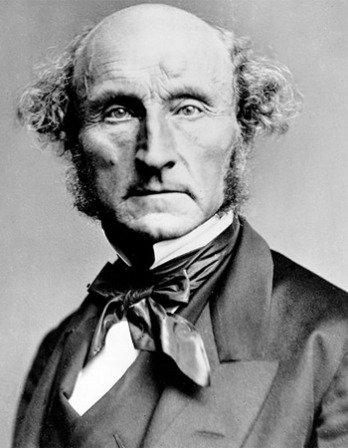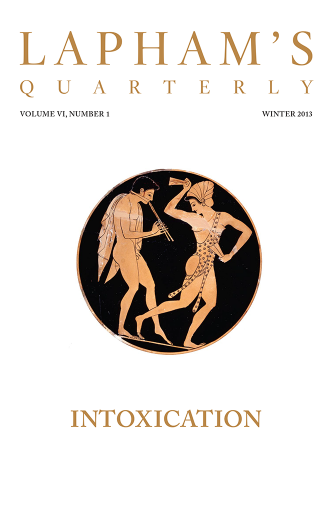Crime Scenes
The American fondness for the dressing up of crime in the costumes of romance is an amusement priced at too high a cost.
By Lewis H. Lapham
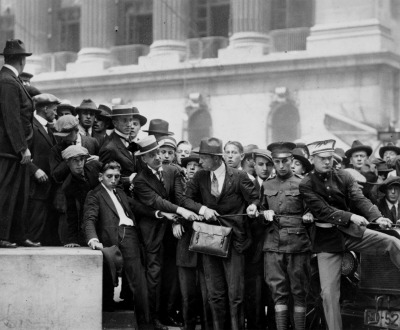
Soldiers and police establishing line at door of the Morgan Bank after anti-capitalist Wall Street bombing, September 16, 1920. Library of Congress, Prints & Photographs Division, New York World-Telegram and the Sun Newspaper Photograph Collection.
When it’s a choice between writing the story and writing the myth, write the myth.
—John Ford
Twenty-five years ago when in the company of foreign journalists visiting New York, I could count on their remarks about the American love affair with crime to strike a tone that was condescending and amused. So exciting, the wild American West; so many new and noteworthy killings listed daily in the tabloid press; so many felons to the manor born departing the courthouse with a book deal instead of a conviction, on their way to lunch with Barbara Walters or reelection to a seat in Congress. Gatherings sponsored by one of the city’s publishers or literary agents seldom failed to turn up a French film critic comparing Francis Ford Coppola’s Godfather movies to Aeschylus’ Oresteia, or a German novelist wondering where one might walk out of an evening in Harlem to hear the music of violence in the voices and in the streets.
Times have changed, and with them the attitude of the travelers from abroad. The conversations have moved uptown, from restaurants in SoHo to U.N. conference rooms, where most of those present have in mind the exploits of the lawless Bush administration, the snapshots taken at Abu Ghraib, and the pillage of the Wall Street banks. Concerned with the survival of something that can be recognized as Western civilization, they ask why the FBI doesn’t seal with yellow crime-scene tape the entrances to Citigroup and the New York Stock Exchange, why the reluctance on the part of the American intelligence services to renounce their faith in torture, why the interest rates charged by the credit-card companies on a par with the ones imposed by the associates of Tony Soprano? Despite the never-ending wars on crime waged by the producers of Law & Order and CSI, why does the murder rate in the United States dwarf the comparative statistics in all of Western Europe and most of Asia?
The sharper points on the questions suggest that from the foreign point of view, the American fondness for the dressing up of crime in the costumes of romance begins to be seen as an amusement priced at too high a production cost—note the documents being passed around the table referring to the $4 trillion capitalization of the war in Iraq and the $7.7 trillion write-down of the subprime mortgage bubble. The numbers speak to the suspicion that the American way of life—to the extent that it depends on the casting of the outlaw as the hero of the tale—is not the best of all possible ways into the near or distant future.
Together with President Barack Obama, I don’t doubt the need for a change in moral policy, but to worry about winning or losing the wars on crime is to miss the point. It’s enough that they should be ongoing, and for answers to the wonderings why, to read the handwriting on the walls of the news and entertainment media and follow the gunplay around the continuous loop of war movie and police drama that secures the perimeter of the national dream of Eden. As per the rule of thumb laid down by John Ford, the Hollywood director best remembered for the movie Stagecoach, the myth is where the game is at, where Veronica Lake and the Sundance Kid team up with Teddy Roosevelt and the perps who gave the Boston Tea Party to drive the wagons west to Oregon, changing horses in Fort Laramie under John Wayne’s cottonwood trees, sometimes heading south for Sunset Boulevard in company with Philip Marlowe on the bobtailed nag, Ronald Reagan on the bay.
As a schoolboy in San Francisco during World War II, I didn’t draw distinctions between the story and the myth. Humphrey Bogart and Errol Flynn were in action on the city’s movie screens, the U.S. Navy’s warships anchored at Treasure Island, and in the eighth grade I encountered William Bolitho’s Twelve Against the Gods, case studies of twelve world-beating renegades—among them Alexander the Great, Christopher Columbus, Casanova, and Napoleon—emblazoned on the page as prototypes of the American hero as romantic outlaw, at odds with every Nazi, parent, king, platitude, and tollbooth that society lays across the road to freedom. “Like the eagles,” so said Bolitho, “we were born to be free. Yet we are obliged, in order to live at all, to make a cage of laws for ourselves and to stand on the perch. We are born as wasteful and unremorseful as tigers; we are obliged to be thrifty, or starve, or freeze. We are born to wander, and cursed to stay and dig.”
A story made for schoolboys too young to see the sorrow in it, and one that as a schoolboy I associated with the eagle on the Great Seal of the United States. Heartened by the lessons posted on the blackboard, I was glad to learn that the history of America was the spirit of adventure made manifest from sea to shining sea—the truant American republic escaping from the prison of the British Empire, Huckleberry Finn lighting out for the territories, the Rocky Mountain fur traders followed over the far horizon by the pioneers en route to the California goldfields, their talent for the fast draw and the artful dodge passed down through the generations by the Texas cattle barons, the New York railroad kings, and the Chicago mob in the form of “the clear, earthly beauties of boldness” that Jean Genet discovers in the joy of stealing and Saint Augustine recognizes in the “greedy love” of “doing something that was forbidden.”
The plot lines haven’t changed much over the last fifty years. James Bond and Quentin Tarantino stand in for Robert Mitchum and Raymond Chandler, Bruce Willis and the Coen brothers for Gary Cooper and the Maltese Falcon. But whether the setting is a Mexican desert or the Brooklyn waterfront, the good guys don’t have much use for the bloodless and chicken-hearted paperwork otherwise known as due process of law. Traveling light in the character of the private detective or the lone horseman without obligation to family or to the society from which he has made good his escape, the noble savage bearing the marquee name regards with contempt the shabby masquerades (courthouse, police precinct, assay office) that mount the pretense of civilization (aka “the system”) in what he knows to be a desolate wilderness inhabited by crooked sheriffs and lying politicians. Drifting into town to find the usual slouch of villains abusing the preacher at the door of the church, he volunteers his services as jury, judge, and firing squad. Not because anybody asked him for any favors, but because he is the word of God, the American eagle backed by Robespierre’s notion that “terror is nothing but prompt, severe, and inflexible justice,” that without terror “virtue is powerless,” come down from the sky with the fire and brimstone to utterly destroy—as did Jehovah in days of old the Hittites, Amorites, Canaanites, Perizzites, Hivites, and Jebusites—setting a bad example in the streets of Laredo or the suburbs of Philadelphia. After a suitable number of dead bodies have been placed on the altar of truth, the deus ex machina rides off into a new morning in America, leaving it to the women and the storekeepers in town to round up the horses and dig the graves.
Transferred into the pitiless deserts of finance and politics, the American romance with crime excites the adoration of the Wall Street magi, as wasteful and unremorseful as tigers, notable during the whole of the country’s history for their robbing of widows and beggaring of orphans, made in the image of Russell Sage and Jay Gould, of whom it was said in the 1870s, “When they speak they lie; and when they are silent they are stealing.” During the second coming of the American Gilded Age in the 1980s and 1990s, the heroes of the day were the fearless captains of commercial enterprise, freebooting and resolute, happy to say, as did one of their accomplices to a reporter for Fortune magazine, “We have a mature, responsible attitude toward our major competitors. We’d like to see them dead.” When the James Gang robbed the Kansas City Fair in the autumn of 1872, the local paper compared the gunmen to the knights of King Arthur’s Round Table, their exploit “so diabolically daring and so utterly in contempt of fear that we are bound to admire it and revere its perpetrators.” The national newspapers drummed up the same legend in the winter of 1961 to welcome the Kennedy gang to the Washington fairgrounds suddenly bright with the banners of Camelot.
The standard script obliges the presidential campaigns to cast the out-of-town candidate as the hard wind blowing in from the west, Senators Obama and McCain in last year’s election both coming out of the clouds and down through South Pass to deliver the schoolmarm, the barber, and the blacksmith from the slouch of villains hanging around the saloons on Capitol Hill. Presidents Reagan and Clinton at least had the sense to know the difference between the reality and the romance. President George W. Bush—nobody apparently having told him that Steven Seagal had been mustered out of the Santa Monica National Guard—did not. His stealing of the election in Florida entitling him to walk the walk as it had been walked with its boots on in Deadwood, he believed himself an outlaw with a heart of gold. Why not invite Saddam Hussein to make his day, burn down Baghdad, save democracy and the dancehall girls? How else would Eastwood have handled it?
Although by Bolitho’s definition all adventurers are criminals, not all criminals—very few in point of fact—are adventurers, and it is the mixing up of the logic and the mugshots that puts the hit man and the pickpocket in the same police lineup with the Deerslayer and Daniel Boone. I learned to draw the distinctions as a newspaper reporter—first in San Francisco and then in New York—assigned to show up at crime scenes that hadn’t been assembled for an episode of Hill Street Blues. I spent a good deal of time in the lower criminal courts or in the custody of cops shoving the suspect into a squad car, the corpse into the back of an ambulance. There was no glamour in the business—the basement or the stairwell thick with the smell of a sewer, both the living and the dead apt to be smeared with their own feces, nobody in the vicinity who resembled George Clooney or the Scarlet Pimpernel. As read out by the clerk two days later at the arraignment, the record of prior convictions (sale of narcotics, grand and petty larceny, felony assault, attempted murder) told the story of a life that was as brutish and poor as it was nasty and short. The accused, now chained, showed neither interest nor remorse, the expression in his eyes as empty as a vacant lot.
I got used to seeing the same expression on the dead faces of the high-end criminals (crooked Wall Street financiers, notorious madams, Las Vegas mobsters keeping company with Frank Sinatra, the friends of Richard Nixon) crowned in the glow of celebrity that attended their comings in and goings out of the tabloid press. During the few months before he was shot to death in Umberto’s Clam House in the spring of 1972, Joey Gallo, well-known Mafia man about town, often dined in the less spirited venue of an Upper East Side restaurant frequented by a brand-name clientele that prided itself on its sophistication and took pains to preserve an air of indifference even when confronted with the entrance of Roman Polanski or Jack Nicholson. Gallo’s arrival never failed to stop all the conversations in the room, the abrupt silence constituting the establishment’s highest mark of esteem. Gallo brought with him the hope of blood on his shoes and a thrill not unlike the ones evoked by the first news of an urban race riot or a landing on the moon. I didn’t share the love, and when sometimes asked to join the table, I couldn’t see in Gallo anything other than the character of a thief and the mind of a thug—a lizard lying on a rock, blinking in the sun.
By 1972 I was no longer enchanted with the romance of crime. During the course of the Vietnam War—billed by the Pentagon as the glorious adventuring spirit of freedom come to rescue the rice farmers from Communist captivity—I’d met too many soldiers whose lives had been destroyed together with those of their wives and children. In the city jails, downtown at the Tombs or across the river on Rikers Island, I’d spoken, however briefly, to enough of the brutalized inmates on both the right and wrong side of the bars to know that the intimate caress of violence doesn’t uplift the soul. I’d also read enough of the history of the old American West to know that the winning of it was the work of men remarkable not only for their ignorance and greed but also for their cowardice, the gunfighters preferring to shoot their enemies in the back, from long range and with a rifle. The presidential commission appointed in 1869 by Ulysses S. Grant to look into the disappearance of the Plains Indians summarized its findings as follows: “The history of the border white man’s connection with the Indians is a sickening record of murder, outrage, robbery, and wrongs committed by the former, as the rule, and occasional savage outbreaks and unspeakably barbarous deeds of retaliation by the latter, as the exception.”
For whatever the reasons, I no longer can look at the Hollywood staging of crime scenes, whether on the old American frontier or in the new Miami Beach hotels, without thinking of them as lullabies meant to comfort an audience believing itself surrounded by enemies of infinite number—by Arab terrorists and cutthroat California mortgage salesmen, by Colombian drug lords, Mexican immigrants, cigarette smoke, and microbes in the peanut butter. Strong measures clearly being called for, the producers of the cinematic palliative over the last twenty years have upgraded the synthetic violence and strengthened the bloody anodynes, the American bald eagles armed with supernatural powers and semiautomatic rifles, sometimes with antitank weapons, setting off bigger explosions, inflicting uglier wounds, producing more generous flows of make-believe blood. John Ford had it right. Replace the story with the myth, and the jig is not yet up. Safe behind popcorn boxes and fortified with Raisinets, the movie-going public, increasingly hard-pressed to cling to its perch in the increasingly precarious American Eden, can let go of its fear of the world outside the cineplex and drift quietly off to sleep knowing that somewhere in the city Batman is gunning down the panic in the streets.
